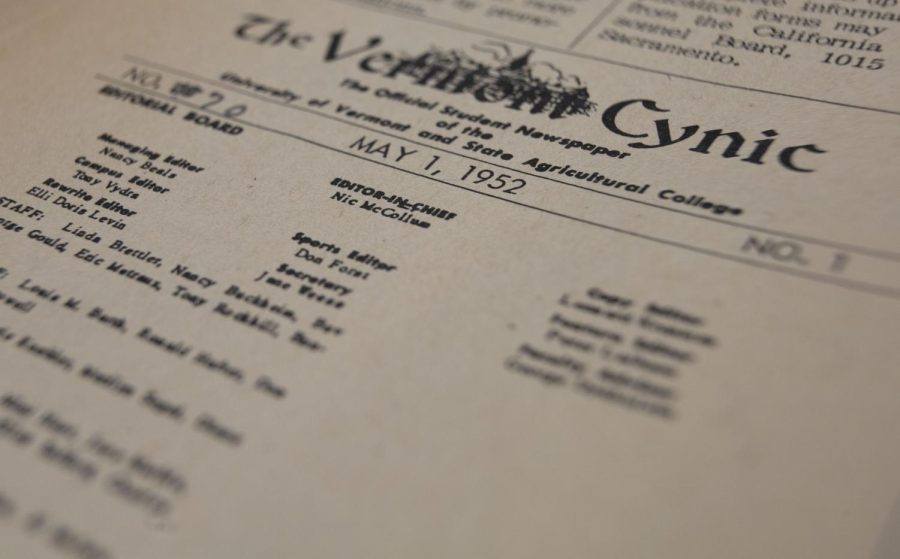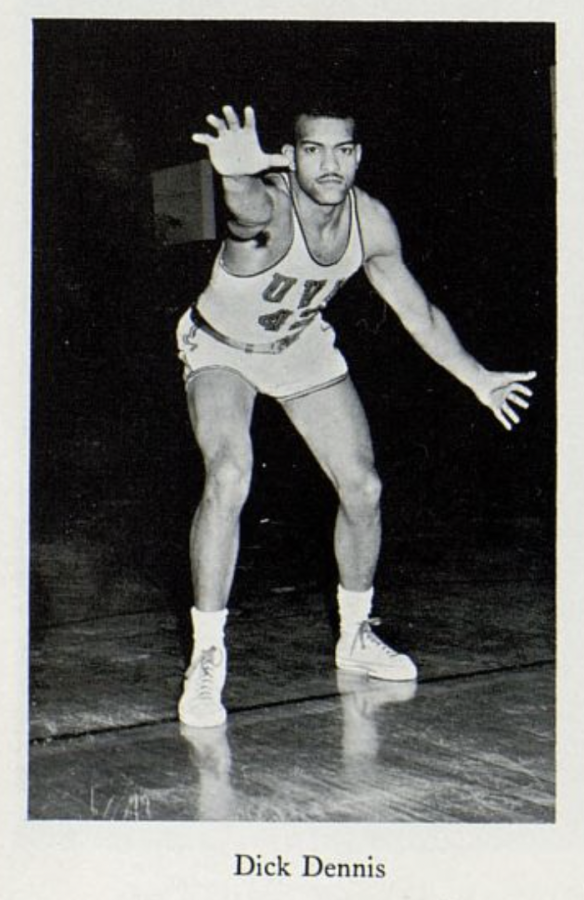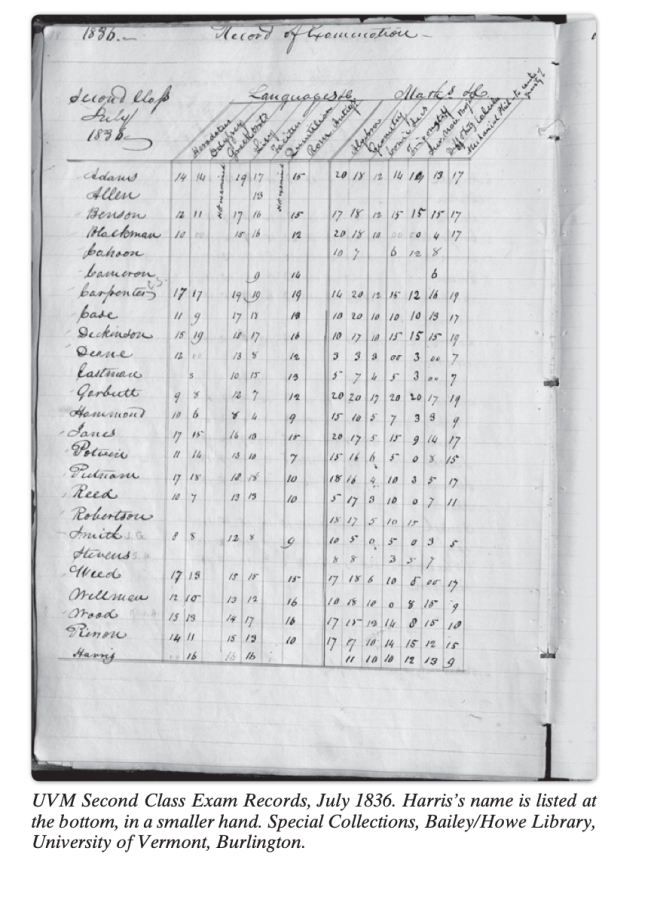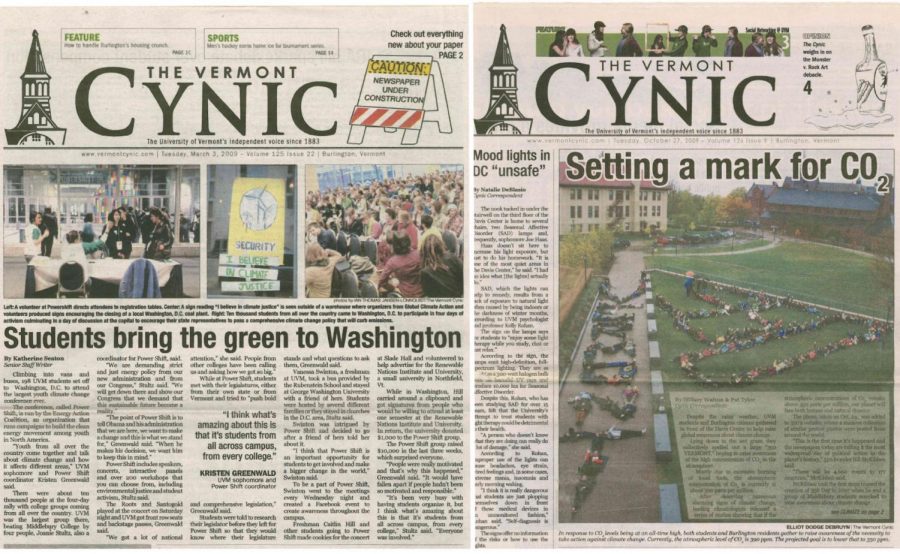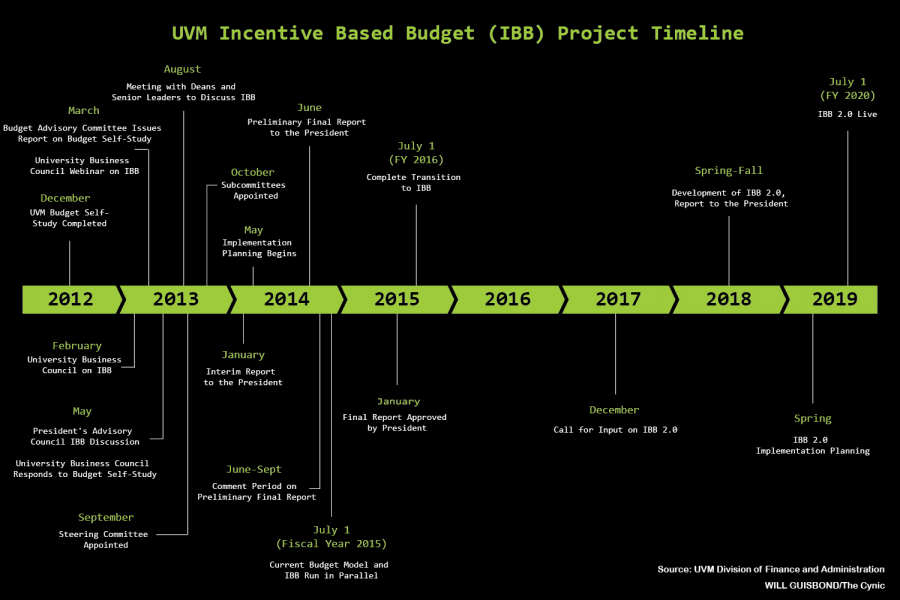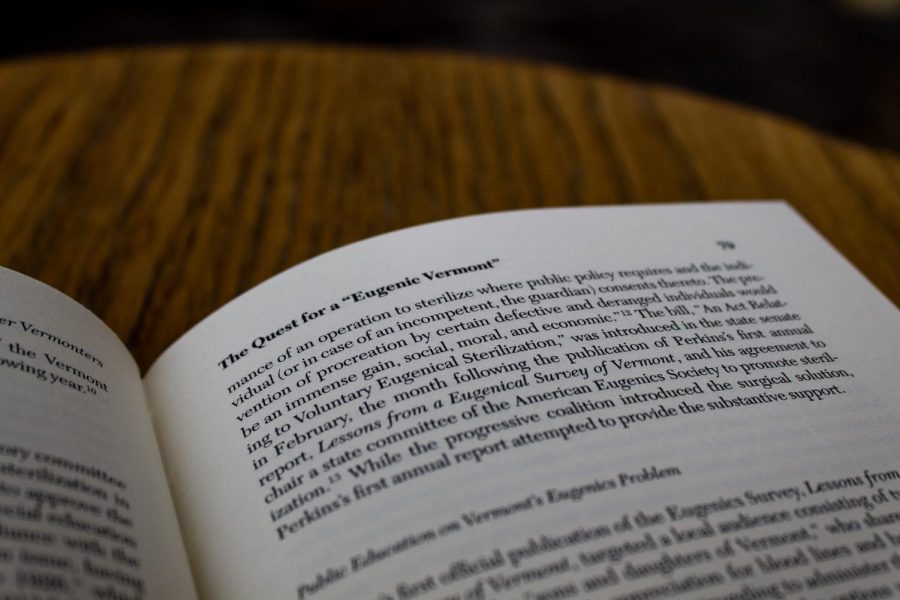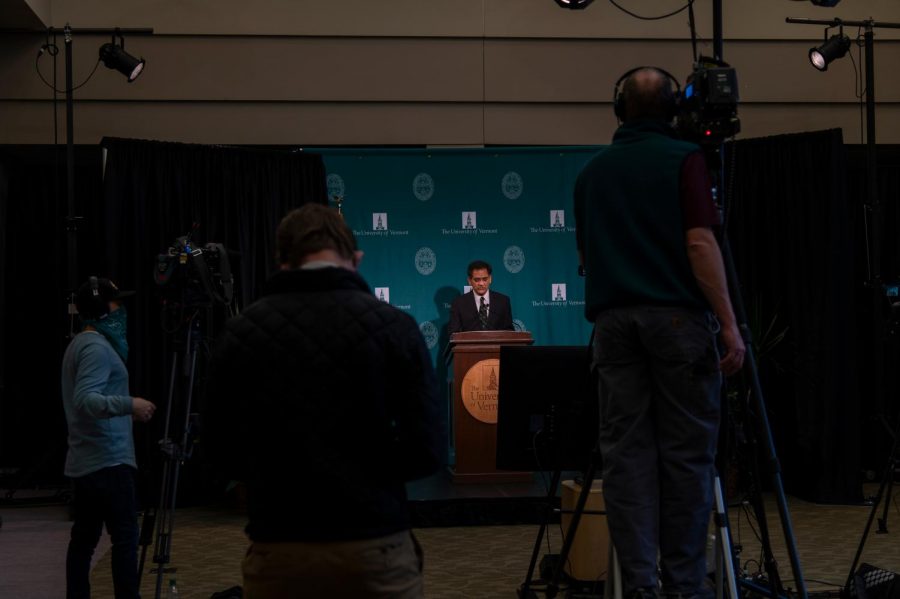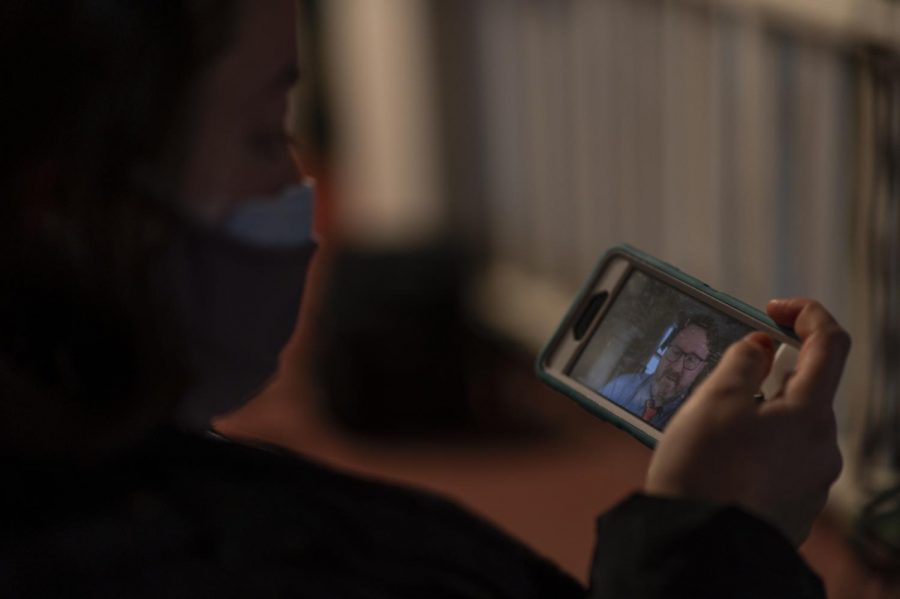Over the next few years the face of UVM will see significant changes, including the removal of certain buildings on campus to make room for the addition of others.
President Tom Sullivan recently addressed many changes that will be made to the campus over the next few years.
“We’ve got a number of really exciting projects that are very strategic to our campus plan,” Sullivan said. “One is the big STEM lab facility.”
The construction of the new Science, Technology, Engineering and Mathematics – STEM – lab facilities will involve the removal of Angell Hall and heavy construction of Cook Hall, Sullivan said.
This dramatic construction is essential for the creation of the new lab facility that will take their place, he said.
First-year Hannah Dragonas said she supports this plan.
“[The] bulidings and resources are outdated, and new settings could help facilitate better instruction and more recent lab techniques,” she said.
“If they put a new lecture hall in the building like Marsh Life Science has, then that makes up for tearing down Angell,” first-year Inana Dairi said.
Phase two of the STEM facility’s construction will be integrating work with the engineering department, which Sullivan said is “really exciting.”
However the construction of these lab facilities is still in the planning stages, he said.
“The board has given approval for taking steps and going ahead and making plans and building plans,” Sullivan said.
The design of the facilities will be similar to that of Old Mill, he said.
“We’re going to go back to that more classical design,” Sullivan said.
This multi-year campus master plan will also include the addition of a new residence hall that will likely be located on Athletic Campus.
The new hall could be located behind the Marsh-Austin-Tupper complex and is expected to house 500 or 600 students, Sullivan said.
It will be a private-public partnership, similar to the idea of the Redstone Lofts, he said. However, the design will be different.
“We want to build this for 500 or 600 students, it will be state-of-the-art, really nice residences and it would be for first-years and sophomores,” Sullivan said. “Juniors and seniors can also choose to live on campus.”
What he said he really wants to do is to get first-years and sophomores back to living in the “heart of campus.”
“We have some [students] over at Trinity right now, we want to not have them on Trinity,” Sullivan said.
“There’s a perception that it’s [Trinity] a bit further away, but actually if you’re in the middle of the green, Trinity is equal distance to Redstone. But perception is important,” he said.
The rest of the construction plan will include the removal of the “shoeboxes,” also known as the Chittenden-Buckham-Wills Complex on Central Campus and the sale of Converse Hall to Fletcher Allen Healthcare.
Plans also exist for changes to Fletcher Allen as well, which will take place over the next three to four years, Sullivan said.
New single patient care rooms will be added to the hospital. The building will be increased to four or five stories, he said.
Sullivan said the University is working with Fletcher Allen to make sure that the architectural design is consistent with that of the STEM lab building.
Sophomore Christa Weaversaid she does not support giving Converse Hall to Fletcher Allen.
“Converse Hall was built in 1895 and has a great deal of historical value to the University,” she said.
“It has always been a building that housed undergraduate students. With a longstanding tradition like what Converse Hall has established, it would be a great loss to the students, alumni and University to give up such a historical piece of campus,” she said.
Sullivan said that his reasons for taking down the “shoeboxes” are because they are “just not acceptable today.”
First-year Molly Condron said she agreed with Sullivan. “I think it’s a good idea. The ‘shoeboxes’ are just an inconvenience there,” she said.
“I don’t see a problem with it if the new dorms will be better and newer than the ‘shoeboxes,'” sophomore Sarah Bullock said.
Sullivan said that nothing is currently planned to replace the residence halls.
He said he believes that their removal will expose, “in a dramatic way,” the whole medical school-hospital complex.
“That whole quad near Fletcher Allen will be dramatically changed and I think hugely improved,” Sullivan said.
“But it will be partly a construction site for a while too,” he said.
If the removal of these residence halls negatively impacts student housing and demand for residence goes up, the University would be open to figuring out a plan to build where the “shoeboxes” currently are, Sullivan said.
If this were the case, Sullivan said the University would have a beautiful new residence hall.
The project will have to be done in stages, Sullivan said. The “shoeboxes” can’t be taken down until the new residence halls on Athletic Campus are built.
“It gives us an opportunity to re imagine and redesign the whole quad and make it much more handsome,” Sullivan said.
“It will be really handsome to really bring that architecture all together,” he said. changes, including the removal of certain buildings on campus to make room for the addition of others.
President Tom Sullivan recently addressed many changes that will be made to the campus over the next few years.
“We’ve got a number of really exciting projects that are very strategic to our campus plan,” Sullivan said. “One is the big STEM lab facility.”
The construction of the new Science, Technology, Engineering and Mathematics – STEM – lab facilities will involve the removal of Angell Hall and heavy construction of Cook Hall, Sullivan said.
This dramatic construction is essential for the creation of the new lab facility that will take their place, he said.
First-year Hannah Dragonas said she supports this plan.
“[The] bulidings and resources are outdated, and new settings could help facilitate better instruction and more recent lab techniques,” she said.
“If they put a new lecture hall in the building like Marsh Life Science has, then that makes up for tearing down Angell,” first-year Inana Dairi said.
Phase two of the STEM facility’s construction will be integrating work with the engineering department, which Sullivan said is “really exciting.”
However the construction of these lab facilities is still in the planning stages, he said.
“The board has given approval for taking steps and going ahead and making plans and building plans,” Sullivan said.
The design of the facilities will be similar to that of Old Mill, he said.
“We’re going to go back to that more classical design,” Sullivan said.
This multi-year campus master plan will also include the addition of a new residence hall that will likely be located on Athletic Campus.
The new hall could be located behind the Marsh-Austin-Tupper complex and is expected to house 500 or 600 students, Sullivan said.
It will be a private-public partnership, similar to the idea of the Redstone Lofts, he said. However, the design will be different.
“We want to build this for 500 or 600 students, it will be state-of-the-art, really nice residences and it would be for first-years and sophomores,” Sullivan said. “Juniors and seniors can also choose to live on campus.”
What he said he really wants to do is to get first-years and sophomores back to living in the “heart of campus.”
“We have some [students] over at Trinity right now, we want to not have them on Trinity,” Sullivan said.
“There’s a perception that it’s [Trinity] a bit further away, but actually if you’re in the middle of the green, Trinity is equal distance to Redstone. But perception is important,” he said.
The rest of the construction plan will include the removal of the “shoeboxes,” also known as the Chittenden-Buckham-Wills Complex on Central Campus and the sale of Converse Hall to Fletcher Allen Healthcare.
Plans also exist for changes to Fletcher Allen as well, which will take place over the next three to four years, Sullivan said.
New single patient care rooms will be added to the hospital. The building will be increased to four or five stories, he said.
Sullivan said the University is working with Fletcher Allen to make sure that the architectural design is consistent with that of the STEM lab building.
Sophomore Christa Weaversaid she does not support giving Converse Hall to Fletcher Allen.
“Converse Hall was built in 1895 and has a great deal of historical value to the University,” she said.
“It has always been a building that housed undergraduate students. With a longstanding tradition like what Converse Hall has established, it would be a great loss to the students, alumni and University to give up such a historical piece of campus,” she said.
Sullivan said that his reasons for taking down the “shoeboxes” are because they are “just not acceptable today.”
First-year Molly Condron said she agreed with Sullivan. “I think it’s a good idea. The ‘shoeboxes’ are just an inconvenience there,” she said.
“I don’t see a problem with it if the new dorms will be better and newer than the ‘shoeboxes,'” sophomore Sarah Bullock said.
Sullivan said that nothing is currently planned to replace the residence halls.
He said he believes that their removal will expose, “in a dramatic way,” the whole medical school-hospital complex.
“That whole quad near Fletcher Allen will be dramatically changed and I think hugely improved,” Sullivan said.
“But it will be partly a construction site for a while too,” he said.
If the removal of these residence halls negatively impacts student housing and demand for residence goes up, the University would be open to figuring out a plan to build where the “shoeboxes” currently are, Sullivan said.
If this were the case, Sullivan said the University would have a beautiful new residence hall.
The project will have to be done in stages, Sullivan said. The “shoeboxes” can’t be taken down until the new residence halls on Athletic Campus are built.
“It gives us an opportunity to re imagine and redesign the whole quad and make it much more handsome,” Sullivan said.
“It will be really handsome to really bring that architecture all together,” he said.


